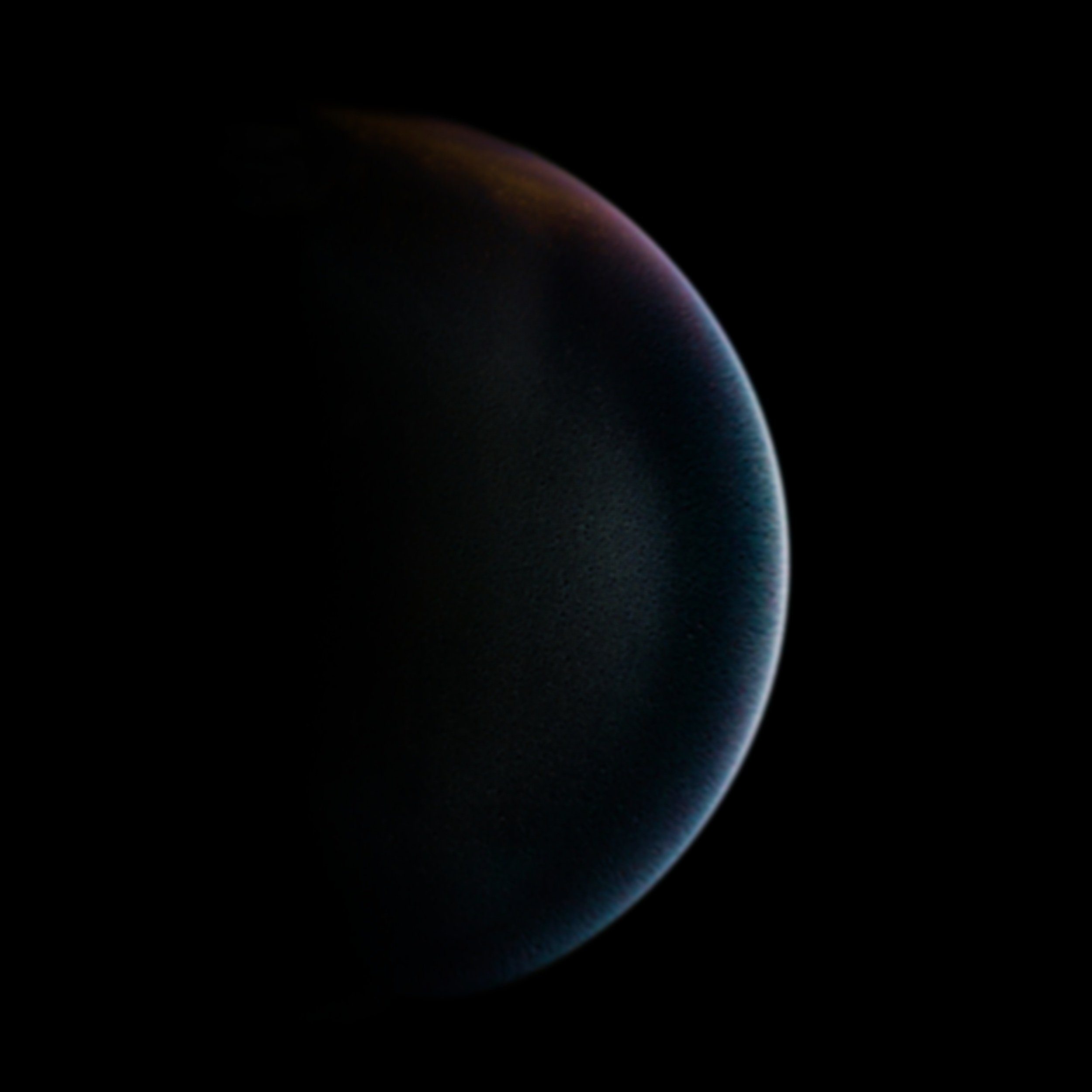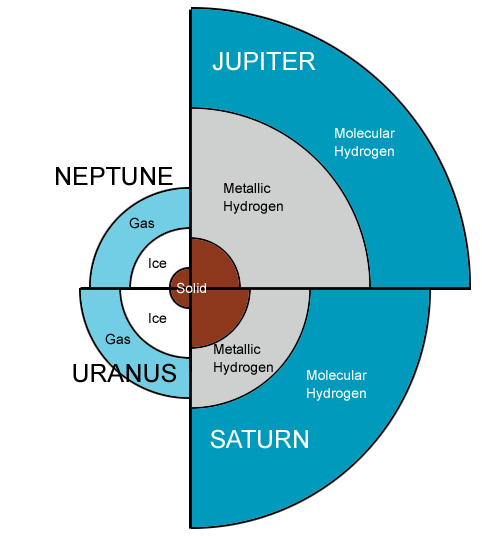
Planets Introduction
Mar. 3, 2024 - Written by Kevin Jie
A planet is a non-illuminating celestial body that orbits a parent star. A planet can vary in size, shape, and color; being arguably the most diverse celestial structure in the universe. Similarly to stars in the stellar life cycle, planets are often formed in relatively the same way but become their own object. This path is less of a cycle and more of a one-way. Before continuing, one common misconception must be cleared. Exoplanets and planets are identical. “Exoplanet,” is just a name given to any planet outside of the solar system.
Beginning with gaseous planets, the emergence of each is totally unique to the last. Most gaseous planets begin as gas rich particles that surround a young star. As the gas particles exist in this orbit around the star, sporadic movement within the star system will make gas particles collide and connect with one another, forming a base. Over time, the base will gain more and more mass, creating its own gravitational pull. From here, the soon to be gaseous planet will rapidly grow.
The gas planet will often grow into 3 layers starting from the seed. This consists of the core (either dense rock or ice), a gaseous mantle and a dense gaseous surface. For example, Jupiter has 3 layers: The core, a metallic hydrogen mantle, and a molecular hydrogen surface. However, not all gaseous planets are specifically split up into a core, a metallic gas mantle, and molecular gas surface. Uranus and Neptune for instance, have mantles primarily composed of ammonia and methane ices. No two gas planets outside the same vicinity should have the exact same composition, as the growth of a gas planet is dependent on the conditions it was put under.
To the left is an illustration of the layers and size comparisons of the four gas planets of our solar system.
Proceeding, we arrive at terrestrial planets, the next general category that also happens to be the one most planets in the universe fall under. Terrestrial planets form nearly identically to gas planets. Both begin as a seed – this time, a chunk of rock – pulling in surrounding chunks where it will begin to rapidly grow into a planet. However, terrestrial planets, unlike gaseous planets, have a much higher chance of not having an atmosphere. Factors such as location in the star system and the orbit of the planet can determine whether it has an atmosphere. This is mainly due to the fact that it is how well the planet is able to hold onto gasses that determines whether it can maintain an atmosphere. This is why many smaller terrestrial planets with a weaker gravitational pull have trouble holding onto one. It also explains why many planets that orbit too close to their sun can struggle to maintain an atmosphere under such extreme temperatures.
On the other hand, atmospheric terrestrial planets have an entirely contrasting realm of possibility. With the capacity of capturing and retaining gasses, no matter how little, weather is now an option. The weather on the terrestrial planet is what shapes the land and makes life. Some of the earliest life forms here on Earth, microbial species, can also be found on worlds in which have or had an atmosphere, including gas planets. Though, terrestrial planets have a slightly different layering. The common layering of a terrestrial planet includes: the inner-core, the outer-core, the mantle, and the crust. It should be mentioned that the crust is the equivalent to the gaseous surface of a gas planet, but the crust of a terrestrial planet is significantly thinner. You may also notice that the core is split up into 2 parts. While they’re both fairly dense, the inner-core is solid and the outer-core is liquid.
Graphic Created by Astron Analytics
A question you may encounter is, “What’s the difference between the mantle and outer core?” Well, there isn’t any specific definition, but instead, the two layers are split based on comparative characteristics such as temperature, depth, and density; factors that vary from planet to planet. Furthermore, terrestrial planets don’t always have an inner and outer core, nor do some even have a mantle. Smaller terrestrial planets, or planets with less mass, usually only have 2 layers. These two being the core and the crust. Similarly to how a core can be split into two, the crust can also be split into two: the inner-crust and the outer-crust. However, this only happens when the crust seems to span a large distance underground. It should be noted that the main difference between the two layers is composition rather than their state of matter (liquid or solid). With this being said, that’s the introduction to planets, describing the two main categories, how they form, and the common features found in the planets in both categories.
Astron Original Document -

Planets Introduction
Mar. 3, 2024 - Written by Kevin Jie
A planet is a non-illuminating celestial body that orbits a parent star. A planet can vary in size, shape, and color; being arguably the most diverse celestial structure in the universe. Similarly to stars in the stellar life cycle, planets are often formed in relatively the same way but become their own object. This path is less of a cycle and more of a one-way. Before continuing, one common misconception must be cleared. Exoplanets and planets are identical. “Exoplanet,” is just a name given to any planet outside of the solar system.
Beginning with gaseous planets, the emergence of each is totally unique to the last. Most gaseous planets begin as gas rich particles that surround a young star. As the gas particles exist in this orbit around the star, sporadic movement within the star system will make gas particles collide and connect with one another, forming a base. Over time, the base will gain more and more mass, creating its own gravitational pull. From here, the soon to be gaseous planet will rapidly grow.
The gas planet will often grow into 3 layers starting from the seed. This consists of the core (either dense rock or ice), a gaseous mantle and a dense gaseous surface. For example, Jupiter has 3 layers: The core, a metallic hydrogen mantle, and a molecular hydrogen surface. However, not all gaseous planets are specifically split up into a core, a metallic gas mantle, and molecular gas surface. Uranus and Neptune for instance, have mantles primarily composed of ammonia and methane ices. No two gas planets outside the same vicinity should have the exact same composition, as the growth of a gas planet is dependent on the conditions it was put under.
To the bottom is an illustration of the layers and size comparisons of the four gas planets of our solar system.
Proceeding, we arrive at terrestrial planets, the next general category that also happens to be the one most planets in the universe fall under. Terrestrial planets form nearly identically to gas planets. Both begin as a seed – this time, a chunk of rock – pulling in surrounding chunks where it will begin to rapidly grow into a planet. However, terrestrial planets, unlike gaseous planets, have a much higher chance of not having an atmosphere. Factors such as location in the star system and the orbit of the planet can determine whether it has an atmosphere. This is mainly due to the fact that it is how well the planet is able to hold onto gasses that determines whether it can maintain an atmosphere. This is why many smaller terrestrial planets with a weaker gravitational pull have trouble holding onto one. It also explains why many planets that orbit too close to their sun can struggle to maintain an atmosphere under such extreme temperatures.
On the other hand, atmospheric terrestrial planets have an entirely contrasting realm of possibility. With the capacity of capturing and retaining gasses, no matter how little, weather is now an option. The weather on the terrestrial planet is what shapes the land and makes life. Some of the earliest life forms here on Earth, microbial species, can also be found on worlds in which have or had an atmosphere, including gas planets. Though, terrestrial planets have a slightly different layering. The common layering of a terrestrial planet includes: the inner-core, the outer-core, the mantle, and the crust. It should be mentioned that the crust is the equivalent to the gaseous surface of a gas planet, but the crust of a terrestrial planet is significantly thinner. You may also notice that the core is split up into 2 parts. While they’re both fairly dense, the inner-core is solid and the outer-core is liquid.
A question you may encounter is, “What’s the difference between the mantle and outer core?” Well, there isn’t any specific definition, but instead, the two layers are split based on comparative characteristics such as temperature, depth, and density; factors that vary from planet to planet. Furthermore, terrestrial planets don’t always have an inner and outer core, nor do some even have a mantle. Smaller terrestrial planets, or planets with less mass, usually only have 2 layers. These two being the core and the crust. Similarly to how a core can be split into two, the crust can also be split into two: the inner-crust and the outer-crust. However, this only happens when the crust seems to span a large distance underground. It should be noted that the main difference between the two layers is composition rather than their state of matter (liquid or solid). With this being said, that’s the introduction to planets, describing the two main categories, how they form, and the common features found in the planets in both categories.
Graphic Created by Astron Analytics
Astron Original Document - Space Introduction









